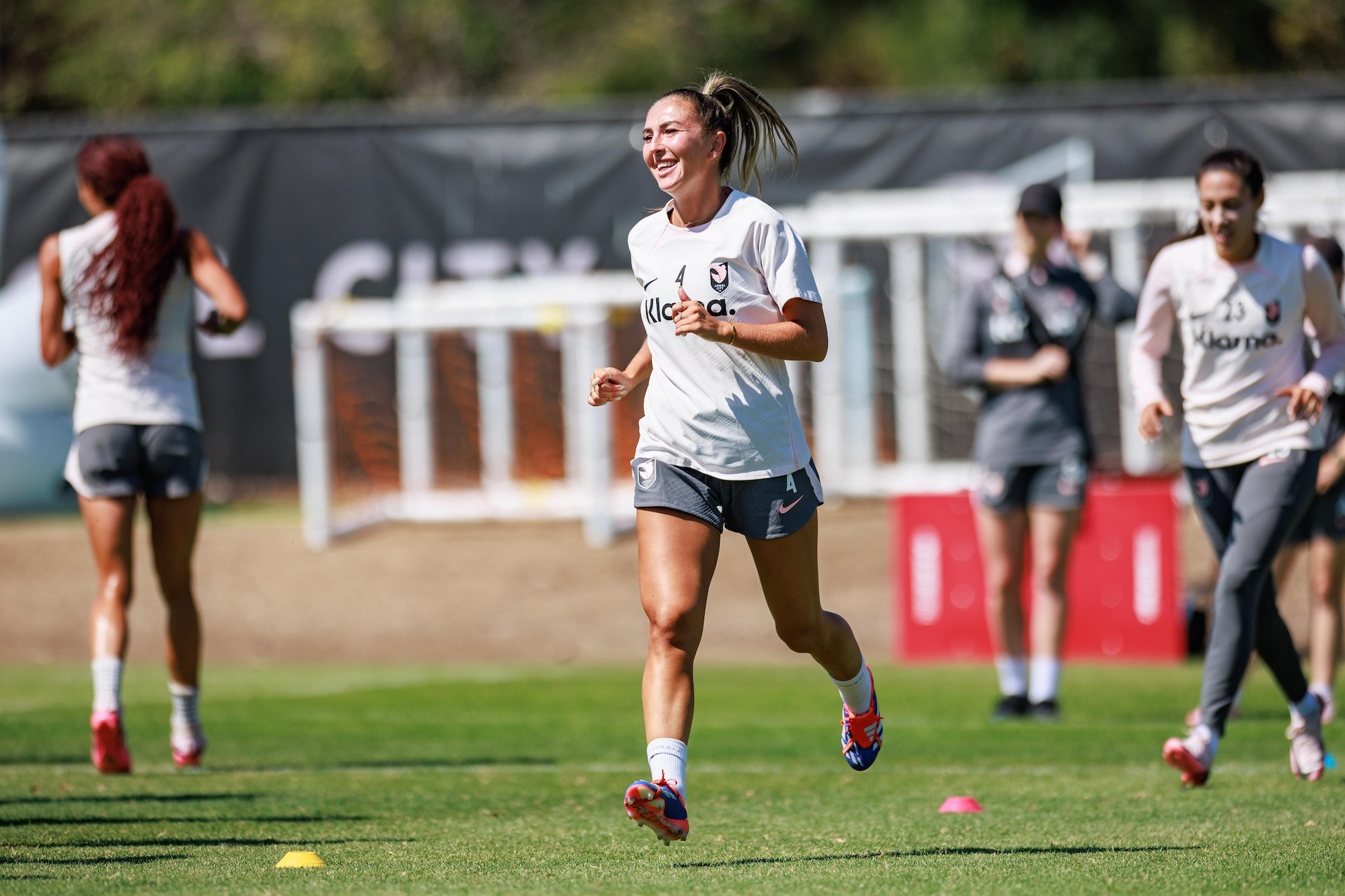

Welcome to The Breakdown, where Angel City players break down the basics of the game to help you understand what they do on the pitch. This week, we talked to midfielder Katie Zelem about the defensive midfielder, or “Number 6” position.
AngelCity.com: The central midfield is usually broken down into three positions: attacking, holding or defensive, and box-to-box, which is a combination of the other two. These positions are also called by the jersey numbers traditionally associated with them—10, 6, and 8, respectively. Could you briefly explain each of those positions?
Katie Zelem: So I think in the simplest of terms, a [No. 6] is the defensive midfielder, the one in front of the back four. They both help break up [the opponents’] play and help start attacks.
An eight is more box to box. They help out in a [No. 6] role but also help out in a [No. 10] role and kind of float in between. They hopefully identify what's needed to kind of fill the gaps in the middle of the pitch.
The [No. 10] is the most attacking midfielder, which is usually the most lucrative position on the pitch! Most people probably know a younger Wayne Rooney or a Messi, or [Manchester City’s] Phil Foden—which is a blow, but I'm a big fan. They help create goals and are probably one of the main assist makers. They can also help chip in with [scoring] goals and they’re the last line of the midfield before you get to the front three or two, however many forwards you play with.
ACFC: Let’s get into a little more detail on the No. 6, which is your favored position. What are your responsibilities in both the defensive and attacking phases of the game?
KZ: I would say in the defensive phase, it’s to help cover in front of the center backs and help fill any holes in the middle of the pitch. You’re cleaning up second balls and communicating to help the players in advance of you get good pressure on the ball. You’re also helping dictate other players’ defensive positions.
And then offensively, you connect the back line to the front line—the defense to the attack. You’re getting on the ball and kickstarting attacks, maybe not always directly to a goal, but I like to call it the “assist of the assist.”
ACFC: What qualities does a player need to be successful in a defensive midfield role?
KZ: I would say they need good awareness and vision. Obviously, it's a position on the pitch that's quite congested, and a position where the opposition are willing to take risks. So if you take too many touches on the ball or make a bad pass, a bad touch, it's often under a lot of pressure. It's a position that is, or can be, man-marked, so you've got to be able to find your way out of tight spaces and be comfortable receiving the ball under pressure. And I think for me it's a role that you often find can be the one that helps dictate play, so communication wise, being able to communicate your knowledge of the game is important.
ACFC: What do you like about the position?
KZ: I enjoy getting the ball. I think for me, over my career, that is probably why I've found myself there—I enjoy getting the ball in any situation, whether it's under pressure or under no pressure. I like to be able to try and get myself out of tight situations. I like to be able to face forward and make the pass that can start off an attack. I also think I have a good ability to read the game and be able to see what's happening in the game, so I can communicate to the rest of the team from that position.
ACFC: What do you need from the players around you to be successful?
KZ: That's a really good question. I think as much as I enjoy communicating as a six, you also need communication from behind and in front, whether it's in attack or defense. I think you need players around you, especially behind you, that trust you on the ball. It's often a situation where you are receiving the ball under pressure, so you need your teammates, especially the center backs and goalkeeper, to trust you on the ball. You've got to be able to build that trust that they want to give it to you and you're comfortable in getting it.
ACFC: What do you think is the most challenging part of the No. 6 position?
KZ: I think the most challenging part is if the game isn't always going too well or how you'd expected, you can find yourself skipped out of the game a little bit. If, if the game ends up going a bit more direct, then sometimes offensively, you can kind of be missed out of the play.
And then defensively, you often have quite a lot of jobs to do. So in comparison to other positions where maybe it's a solo focus, as a six, you've kind of got to be doing half of everything and helping everyone cover certain pockets, certain channels, and the pictures change so quickly wherever the ball is. So sometimes you can find yourself in half-positions where you're doing half your job and half someone else's, and that can result in your job maybe not being done as well.




